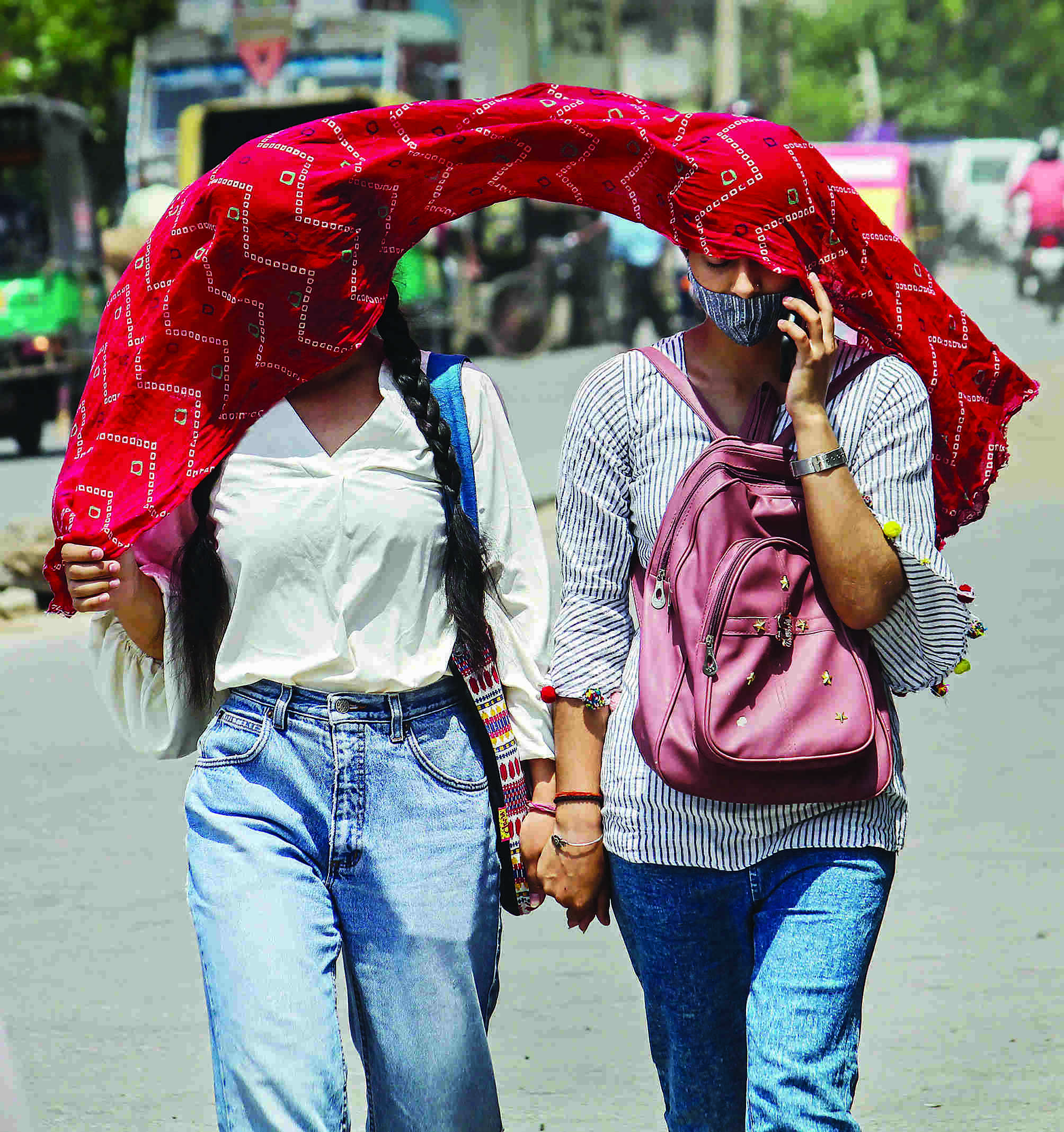Orange alert as Delhi records April's hottest day in 12 years

New Delhi: An intense heatwave broiled Delhi on Wednesday with the Safdarjung observatory recording a maximum temperature of 43.5 degrees Celsius, the highest in April in 12 years.
The national Capital had recorded a maximum temperature of 43.7 degrees Celsius on April 18, 2010. The all-time high temperature for the month was 45.6 degrees Celsius recorded on April 29, 1941.
The mercury leaped to 46 degrees Celsius at Sports Complex, making it the warmest place in the Capital.
As per reports, several schools in Delhi have reduced outdoor activities for students. Moreover, Delhi is experiencing both — extreme heat conditions and a spike in Covid cases, with the city recording over 1,000 cases for the last one week. These conditions are pushing students into their classrooms and reducing their time outdoors. The India Meteorological Department (IMD) has issued an "Orange" alert, warning the city residents of a severe heatwave on Friday.
The IMD uses four colour codes for weather warnings — "Green" (no action needed), "Yellow" (watch and stay updated), "Orange" (be prepared) and "Red" (take action).
Ridge (45.1 degrees Celsius), Mungeshpur (45.8 degrees Celsius), Najafgarh (45.4 degrees Celsius) and Pitampura (45.2 degrees Celsius) recorded the maximum temperature at least five notches above normal. "A maximum temperature of 45 degrees Celsius is normal at places like Churu, Barmer, Bikaner and Sriganganagar in Rajasthan, but 45-46 degrees Celsius in the plains of north India by April-end is quite unusual," independent meteorologist Navdeep Dahiya said.
Blistering heatwave conditions also swept through Haryana and Punjab on Thursday with Gurugram recording a high of 45.6 degrees Celsius.
Gurugram was the hottest place in Haryana while the common capital Chandigarh recorded a maximum temperature of 42.2 degrees Celsius.
In Haryana, Hisar recorded a high of 44.5 degrees Celsius, Bhiwani 43.6 degrees Celsius, Narnaul 44.4 degrees Celsius, Rohtak 44 degrees Celsius, Ambala 42.8 degrees Celsius and Karnal 42.7 degrees Celsius, a meteorological department report showed.
In Punjab, Patiala and Bathinda recorded highs of 43.6 degrees Celsius each, Ludhiana 43.2 degrees Celsius, and Amritsar and Jalandhar 43 degrees Celsius each, the report added.
The mercury at the Safdarjung observatory in Delhi is expected to breach the 44-degree mark on Friday, the weather office said.
Delhi may also see partly cloudy sky, light rain and a dust storm with winds gusting up to 50 kilometres per hour on Friday and Sunday, which may provide temporary respite.
The city has recorded nine heatwave days in April, the highest since 11 such days witnessed in the month in 2010.
Delhi falls in the Core Heatwave Zone (CHZ), comprising the most heatwave-prone areas of the country, along with Telangana, Andhra Pradesh, Himachal Pradesh, Uttarakhand, Haryana, Uttar Pradesh, Rajasthan, Madhya Pradesh, Maharashtra, Bihar, Chhattisgarh and West Bengal.
Northwest India has been recording higher-than-normal temperatures since the last week of March, with weather experts attributing it to the absence of periodic light rainfall and thundershowers, which typify this time of the year, due to the lack of active western disturbances.
The region had got some respite last week owing to cloudy weather due to the influence of a western disturbance over Afghanistan.
The IMD said the heatwave could lead to "moderate" health concerns for vulnerable people — infants, elderly people and those with chronic diseases.
"Hence, people of these regions should avoid heat exposure, wear lightweight, light-coloured, loose cotton clothes and cover the head with a piece of cloth, a hat or an umbrella," it said.
There is an "increased likelihood of heat-illness symptoms in people who are either exposed to the sun for a prolonged period or doing heavy work", an IMD advisory read.
For the plains, a heatwave is declared when the maximum temperature is over 40 degrees Celsius and at least four-and-a-half notches above normal.
A severe heatwave is declared if the departure from normal temperature is by more than 6.4 notches, according to the IMD.
Based on the absolute recorded temperatures, a heatwave is declared when an area logs a maximum temperature of 45 degrees Celsius. A severe heatwave is declared if the temperature crosses the 47-degree mark.
India saw its warmest March this year since the IMD began keeping records 122 years ago amid a 71-per cent rain deficit. Parts of the country are also seeing wheat yields drop by up to 35 per cent due to the unseasonal heat.
A potent combination of sweltering summer and acute coal shortages have triggered blackouts across many parts of the country as states struggle to manage record demand for electricity and low feedstock at power plants.
From Jammu and Kashmir to Andhra Pradesh, consumers are facing power cuts ranging from 2 hours to 8 hours. Factories are the worst hit as the industrial sector is the first port of call for regulating electricity supplies.
At the heart of the crisis are low inventories of coal — the fossil fuel that produces 70 per cent of India's electricity. While the government insists that there is enough coal available to meet the demand, the reduced availability of railway rakes to transport coal has led to coal inventories being at the lowest pre-summer levels in at least nine years. Also, with international energy prices shooting up following the war in Ukraine, coal imports have dipped.



